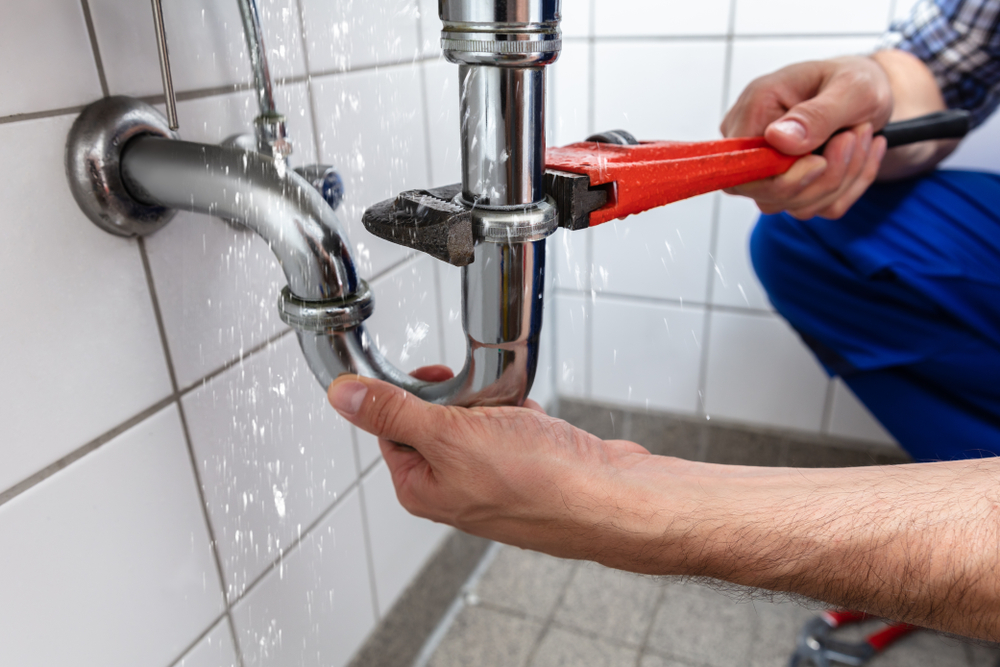Back to Basics is an article series that highlights important, but possibly overlooked, information facilities management professionals should know.
Did you know that one dripping faucet could waste 3,000 gallons of water per month in your office facility, while a running toilet could waste 10 times as much? Using a rate of $0.00295 per gallon, the U.S. Environmental Protection Agency (EPA) estimates this could be more than $100 for a dripping faucet and $1,000 for a running toilet each year! Facilities managers can avoid these costs if they follow the EPA’s advice.

In office buildings, restrooms, cooling and heating systems, landscaping, and kitchens use the most water, according to the EPA. The Agency has specific tips facilities managers can use to avoid water waste:
Tip 1: Develop a water management plan.
There are several steps you can take to develop an effective water management program for your facility, according to the U.S. Department of Energy (DOE).
Some of these steps are:
- Understand the facility water cycle: Determine how water is used within the building.
- Form an interdisciplinary team: Find creative solutions by involving members of various groups.
- Define program scope: Identify existing plans that can impact your efforts, and determine where you want the program to go.
- Create program goals: Ensure goals are measurable and have a specific timeline so performance can be tracked.
Tip 2: Assess your water use.
Office buildings should use the EPA’s “Water Sense Simple Water Assessment Checklist for Commercial and Institutional Facilities” as a guide for what steps to take to review current water usage.
Basically, the checklist advocates for:
- Reading water meters and recording monthly water use,
- Tracking water and cost savings in a utility management system,
- Installing submeters on major water-using equipment, and
- Educating all facility occupants on water management program initiatives.
After improvements are made, check your water usage so you can determine how much money the improvements are saving your organization.
Tip 3: Check for leaks, and repair them promptly.
The EPA advises facilities professionals to check their office facilities for dripping or constantly flowing water, water flowing into drains, or persistently wet areas. They should also listen for constantly running equipment, constantly flowing water, and comments from staff and visitors.
Specifically, you should check toilets, sinks, and showers for leaks, as some offices have showers next to fitness rooms. Showers can be repaired by ensuring a tight connection using pipe tape and a wrench, while toilet leaks could be repaired by replacing the rubber flapper. Additionally, ensure the irrigation system isn’t damaged by frost or freezing.
When leaks are found, they should be repaired right away.
Tip 4: Replace restroom fixtures with more efficient models.
Facilities professionals should work with office building management and consider replacing urinals and toilets for significant cost savings.
The EPA reports that “a typical office building could reduce its water use from old, inefficient urinals by 26,000 gallons per year or more,” adding that while the current federal standard for urinals is 1 gallon per flush (gpf), some older urinals use up to five times that amount. Additionally, facilities professionals could work with building management to replace old toilets, which can have flush volumes as high as 3 to 7 gpf—the federal standard for these is 1.6 gpf.
For even more savings, use WaterSense-labeled flushing urinals that use a maximum of 0.5 gpf and WaterSense flushometer-valve toilets that use a maximum of 1.28 gpf.
“By replacing old, inefficient flushometer-valve toilets with WaterSense labeled models, a 10-story office building with 1,000 occupants could save nearly 1.2 million gallons of water and nearly $10,000 a year,” according to the EPA.
Tip 5: Use smart landscaping and irrigation practices.
Facilities professionals should know how much to water plants outside their office facilities before turning on the sprinkler.
The EPA has the following advice:
- Timing is everything: Avoid watering in the middle of the day, and use only about an inch of water each week, including rainfall.
- Smarter technology can help: Turn the irrigation system on automatically with the water volume that’s needed, and install a micro-irrigation system to apply water slowly and directly on plant roots.
- Manage your irrigation system: Adjust the irrigation system often, set the sprinklers to keep water on the landscape, inspect the system monthly, and plant similar plants together. Also, irrigation professionals should consider getting WaterSense-certified.
Tip 6: Optimize your cooling systems.
Facilities professionals should examine their cooling systems and determine whether they can provide or use alternative on-site sources of water.
Some examples of on-site alternative water sources include:
- Rainwater/stormwater
- Foundation drain water
- Treated gray water
- Condensate from air conditioning equipment
- Filter and membrane (e.g., reverse osmosis system) reject water
- Cooling equipment blow-down
Furthermore, these types of waters can be used for several other water applications, such as irrigation, toilet and urinal flushing, water for decorative ponds, and more.
Keep in mind that the EPA has strict guidelines on water reuse, which include the quality constraints of the source and the type of treatment that might be needed to meet the quality needs of the proposed end use. For example, stormwater can only be used for nonpotable use, while rainwater could be used for irrigation without additional treatment.
Facilities professionals looking to fight water waste should develop a water management plan, assess their water use, check for leaks and repair them promptly, replace restroom fixtures with more efficient models, incorporate smart landscaping and irrigation practices, and optimize their cooling systems. Putting these tips into practice will ultimately help you save money and be more environmentally friendly.
